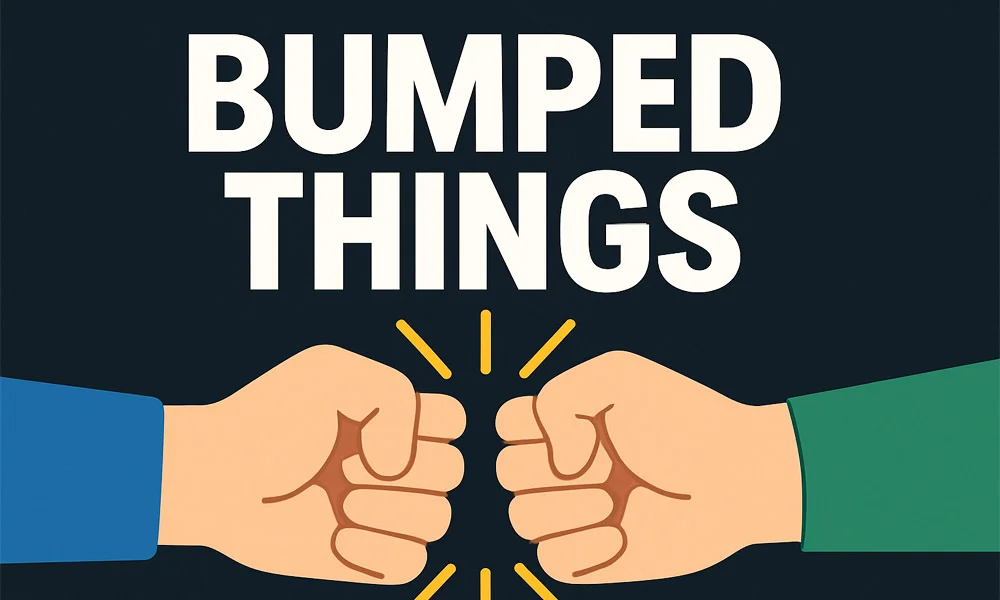Crossword puzzles have held a special place in the world of word games for over a century, blending linguistic agility with cultural literacy and logic. Among them, The New York Times crossword stands as a hallmark of intellectual challenge and entertainment. Recently, an intriguing clue—bumped things nyt crossword—has sparked discussion and curiosity among both casual solvers and devoted cruciverbalists. This article delves deep into the cultural resonance, linguistic intricacies, and broader implications of this clue while exploring its place within the NYT crossword legacy.
The Legacy of The New York Times Crossword
The New York Times began publishing its crossword in 1942, during the trying days of World War II. Over the decades, it evolved from a simple pastime to an emblem of wit, intelligence, and cultural relevance. Every day, thousands of solvers take on the grid, with difficulty increasing from Monday to Saturday, and the celebrated Sunday edition offering a larger, thematically rich experience.
NYT crosswords are known not only for their clever wordplay but also for how they reflect the zeitgeist. Editors and constructors carefully craft clues that resonate with current events, popular culture, history, and even memes, creating an ever-evolving landscape of intellectual exploration.
The Curious Case of Bumped Things NYT Crossword
Clues like bumped things nyt crossword are not just literal hints; they can be linguistic puzzles unto themselves. This phrase encapsulates a style of clueing that challenges the solver to think beyond surface-level meanings. It may refer to a physical action, like nudging or colliding, or more abstract interpretations such as unexpected disruptions or changes in a sequence.
Part of the charm and challenge lies in the duality of meaning. “Bumped things” could allude to objects that were knocked out of place, or metaphorically to events or ideas that have been altered or reshaped. When integrated into a puzzle, this clue invites the solver to navigate both language and interpretation, reflecting the broader intellectual rigor of the NYT crossword.
Interpreting Clue Structure and Language
Crossword clues typically operate on several levels: definition, wordplay, and thematic hints. A clue like “bumped things nyt crossword” could easily belong to a puzzle with a rebus theme, where multiple letters occupy a single square, or a theme involving words being metaphorically “bumped” from their expected order.
For example, a themed puzzle may present phrases in which key components have been shifted or altered. Solvers then deduce not just individual word meanings but the meta-structure governing the entire puzzle. Such clues require solvers to think laterally, often demanding outside-the-box reasoning and familiarity with idiomatic expressions.
Constructing and Solving: A Balancing Act
Puzzle constructors face the challenge of balancing cleverness with fairness. Clues like bumped things nyt crossword must be solvable with the provided crosses (the intersecting answers), ensuring the solver isn’t left grasping in the dark. At the same time, the clue needs to be witty or surprising, offering that ‘aha’ moment that seasoned solvers relish.
Will Shortz, the NYT crossword editor since 1993, has emphasized the importance of fair play in clue construction. Even the most cryptic clues are designed with solvability in mind, as long as the solver brings patience and insight. A clue that references something being “bumped” might use that action as a metaphor for shifted letters or displaced meanings, all within the puzzle’s consistent logic.
Community Reactions and Social Media Engagement
One of the most fascinating aspects of the NYT crossword’s evolution is its interaction with digital communities. Sites like Reddit, Twitter, and crossword blogs host vibrant discussions, clue analyses, and solution debates. When a clue like bumped things nyt crossword appears, it quickly becomes a talking point.
Users often share their solving experiences, frustrations, and revelations, creating a collective solving journey. These platforms also enable the crowd-sourcing of knowledge—what one solver misses, another may catch. The participatory nature of solving adds a communal layer to what is traditionally a solitary pursuit.
Thematic Layers and Meta Meanings
The clue in question may also serve as a nod to real-world disruptions. In recent years, NYT puzzles have reflected themes of political upheaval, cultural movements, and societal shifts. A clue such as bumped things nyt crossword may metaphorically point to societal disruptions—how traditions or expectations are bumped off track.
Moreover, themed puzzles sometimes present answers that are literally bumped—offset from their expected position in the grid, or part of a visual pun. This use of spatial and linguistic trickery elevates the puzzle from a word game to a piece of interactive art.
Educational Value and Cognitive Benefits
Solving clues like bumped things nyt crossword isn’t just entertainment—it’s mental exercise. Studies have shown that regular crossword engagement improves vocabulary, memory retention, and even slows cognitive decline. Complex clues push solvers to make connections, draw on a wide array of knowledge, and practice problem-solving under mild cognitive stress.
This educational component is part of the puzzle’s enduring popularity. Parents introduce puzzles to children, schools incorporate them into language classes, and seniors use them to maintain mental acuity. The joy of solving is underpinned by the subtle benefit of brain training.
Puzzle Construction: Behind the Scenes
Behind every NYT puzzle is a creator who carefully constructs the grid. The process begins with a theme—perhaps around displacement, making a clue like bumped things nyt crossword an ideal fit. The constructor then builds a symmetrical grid, often constrained by the theme’s demands.
Constructors submit their puzzles to the NYT editorial team, which vets and tests them rigorously. The clue-writing process is a collaborative effort, ensuring that the final product is challenging, fair, and enjoyable. Many clues evolve from their original submissions, refined through editorial feedback.
The Crossworld Ecosystem
“Crossworld,” as solvers affectionately call it, is more than a hobby—it’s a lifestyle. Fans of the NYT crossword often subscribe, compete in tournaments, and even try their hand at constructing puzzles. The clue bumped things nyt crossword is a touchpoint within this ecosystem, representing both the complexity and charm that keep solvers coming back.
Crossword tournaments, such as the American Crossword Puzzle Tournament (ACPT), celebrate this culture. Competitors there would appreciate the layered nuance in a clue that requires interpreting both literal and metaphorical meanings. It’s not just about solving—it’s about decoding the constructor’s mind.
Crossword Culture and Pop Media
Crossword culture has even permeated popular media. TV shows, films, and books often depict characters solving puzzles to signal intelligence or introspection. The iconic status of the NYT crossword means that clues like bumped things nyt crossword carry cultural weight beyond the grid.
Such clues become Easter eggs, rewarding solvers who bring not only vocabulary but cultural literacy to the puzzle. In many ways, each clue is a micro-narrative—a distilled moment of wit, knowledge, and design.
A Testament to Language and Logic
At its core, the NYT crossword is a celebration of language. Each clue, from the simplest to the most complex like bumped things nyt crossword, challenges solvers to reexamine how words function. They must consider puns, homophones, etymologies, and cultural connotations.
This deep engagement with language has pedagogical benefits as well. Educators often recommend crossword solving for students struggling with vocabulary or comprehension. The puzzle teaches by immersion—embedding learning within fun.
Conclusion: More Than Just a Clue
The clue bumped things nyt crossword exemplifies what makes the NYT puzzle an enduring institution. It challenges solvers not just to fill in letters, but to interpret, imagine, and collaborate. In doing so, it reflects the evolving relationship between language, culture, and cognition.
As the world grows increasingly complex, the crossword remains a constant—a grid of squares filled with possibility. Clues like bumped things nyt crossword ensure that the puzzle stays not only relevant but revolutionary, pushing boundaries while preserving the tradition of wordplay excellence. For solvers everywhere, the puzzle remains both a pastime and a passion, with each clue offering a new adventure in understanding.

